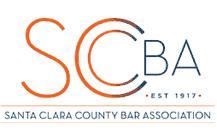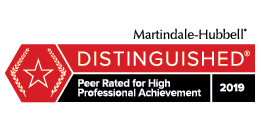How Do Work-Life Referral Services Affect Taxes for Employers?
 In many modern workplaces, employees struggle to maintain the proper balance between their professional responsibilities and personal lives. They have a variety of needs, including managing care for children or elderly family members, determining their eligibility for government benefits, and navigating the healthcare system to ensure that they can receive the proper medical treatment.
In many modern workplaces, employees struggle to maintain the proper balance between their professional responsibilities and personal lives. They have a variety of needs, including managing care for children or elderly family members, determining their eligibility for government benefits, and navigating the healthcare system to ensure that they can receive the proper medical treatment.
To address these issues, employers may provide work-life referral services as part of their benefits packages. It is important for employers to understand the tax implications of these benefits. An attorney with experience in tax law can provide guidance for employers, ensuring that they handle employment tax issues correctly.
Understanding Work-Life Referral Services
Work-life referral services are programs provided by employers to assist employees in dealing with personal and professional challenges. These services range from child care referrals to elder care assistance, from legal counsel to financial planning. They are designed to help employees navigate the complexities that they encounter in their personal lives and reduce the stress of managing these issues entirely on their own.
Work-life referral services can provide benefits in the following situations:
-
Employee Assistance Programs (EAPs): These programs can provide confidential assessments, short-term counseling, referrals, and follow-up services to employees.
-
Life changes: Employees might use work-life referral services during significant life events such as the birth of a child, marriage, or the illness of a family member.
-
Improving work efficiency: By addressing personal concerns through referral services, employees can focus on their work, potentially increasing productivity and job satisfaction.
Tax Implications of Work-Life Referral Services
From a tax perspective, work-life referral services are treated as “de minimis” fringe benefits. In general, de minimis fringe benefits include services provided by an employer to an employee that have so little value that accounting for them would be unreasonable or administratively impracticable. The value of these benefits may be considered to be minimal when taking into account how frequently they are provided by a business to its employees. Common examples of de minimis fringe benefits include occasional personal use of a company copy machine or snacks provided in the break room.
While fringe benefits are generally presumed to be part of an employee’s gross income, de minimis fringe benefits are excluded from gross income. This means that the value of work-life referral services provided by an employer is not considered taxable income for the employee. De minimis fringe benefits are not subject to employment taxes, so work-life referral services are exempt from payroll taxes, Social Security and Medicare taxes, and federal unemployment taxes.
Strategic Considerations for Employers
Providing work-life referral services as part of a benefits package can be very beneficial for employers. The cost associated with providing these referral services is a non-taxable expense that does not contribute to the payroll taxes ordinarily associated with employee compensation. These services can enhance employee satisfaction and loyalty, indirectly reducing costs related to high turnover and improving the company’s overall work environment.
Employers considering the implementation of work-life referral services should keep several factors in mind:
-
Communicate clearly: Employers should ensure that employees are aware of the availability and scope of these services to maximize utilization and effectiveness.
-
Monitor usage and feedback: Employers should regularly assess the usage rates of and employee feedback on these services to ensure they are meeting the needs of the workforce.
-
Review tax compliance: Employers can work closely with tax professionals to ensure that the services provided meet the criteria for de minimis benefits and are properly reported where necessary. Employers are required to establish the frequency at which fringe benefits are provided using an “employee-measured” frequency standard. If it would be administratively difficult to determine when fringe benefits are provided to individual employees, an employer can measure the frequency at which these benefits are provided to their workforce as a whole using an “employer-measured” frequency standard.
Contact Our San Jose, CA Tax Lawyer
As businesses look for ways to support their employees in addition to paying traditional compensation, work-life referral services can serve as a valuable tool in enhancing employee satisfaction and maintaining a balanced, productive workplace. At John D. Teter Law Offices, our San Jose tax attorney can help employers understand the tax implications of different types of benefits, ensuring that they comply with all applicable tax laws. To set up a consultation, contact us at 408-866-1810.









